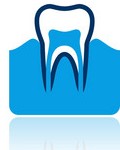
Tooth Extractions
Tooth Extractions: What to Expect
Although it sounds complicated, a tooth extraction is a routine procedure that according to The Mayo Clinic carries a very low risk of long-term complications. The procedure itself is painless when performed by an experienced dentist or oral surgeon, and the recovery process is usually equally simple.
Causes for Tooth Extraction
There are many reasons why a dental healthcare provider would recommend extracting one or more teeth. One of the most common reasons is due to severe tooth decay beyond what is reasonable to save. In these cases, an extraction is performed to prevent infection and also make the patient more comfortable.
A dentist may also recommend extraction for impacted teeth, malfunctioning teeth or teeth that are hard to clean, such as the wisdom teeth. Removal of wisdom teeth can prevent crowding and may also be more prone to causing inflammation or infection if they do not fully emerge.
Procedure
Although there are exceptions, most tooth extractions are uneventful procedures that last only a few minutes. Usually, the dentist or surgeon will have already taken x-rays of the teeth prior to the procedure. The tooth, gum and bone will then be anesthetized using a local numbing agent for a patient who will be awake for the extraction. Conscious sedation may also be administered to help with anxiety during the procedure. Once the extraction begins, patients should feel only pressure – not pain. In most cases, the dentist can remove the tooth using only applied pressure to the socket and dental forceps, rather than surgical intervention.
In some cases, a dentist or oral surgeon will recommend full sedation – especially if there will be more than one tooth extracted during the procedure. In this case, the patient is instead given anesthesia intravenously to prevent pain throughout the entire body. Patients who undergo a sedated tooth extraction will have no memory of the procedure.
Recovery
Following a dental extraction, the dentist or oral surgeon will have a very specific set of instructions for caring for the extraction site in the hours and days following the tooth removal. Usually, this involves leaving gauze on the extraction site to minimize bleeding for the first few hours.
Depending on the type of tooth extraction performed, the dentist or oral surgeon may also prescribe medication to help relieve pain for the first few days following the procedure. So long as the extraction site is kept clean and patients follow the instructions for care, the gums should heal in a matter of weeks without complication or infection. Furthermore, if necessary and once the extraction site heals, the dentist can replace one or more missing teeth with a bridge, a denture or a permanent dental implant for both functional and aesthetic purposes.
For Your Dental Needs: Call (317) 336-7788
Our Services

General - Family - Preventive
General dentistry is the branch of medicine involving the care and prevention of oral health conditions, diseases and disorders.

Dentures
Currently, there are a number of options available for people who have lost their teeth. One of the most versatile is a set of removable dentures.

Dental Implants
During the last 20 years, dental implants have become a desirable alternative to other methods of replacing missing teeth.

Tooth Extractions
Although it sounds complicated, a tooth extraction is a routine procedure that according to The Mayo Clinic carries a very low risk of long-term complications.

Root Canals
Root canal treatment is the process of going inside the pulp space and removing the infected, dead tissue.

Sealants
Dental Sealants are thin layers of resin that are placed on the pits, fissures, and grooves of molars to prevent decay on these surfaces.

Veneers & Laminates
This is one way to quickly get that beautiful smile. Veneers and Laminates are a thin shell of porcelain or resin that is bonded to the surface of the teeth.

Thin Veneers
Traditional porcelain veneers require the tooth to be “prepped” by shaving away a substantial amount of tooth enamel, and the process cannot be reversed.

Crowns & Bridges
A crown (cap) is a restoration that is placed on teeth that have lost a lot of their structure.

Tooth-Colored Fillings
When considering tooth fillings, one of the options available are composite fillings which are made from durable plastics that are similar in color to natural teeth.

Clear Correct
Clear Correct is the clear way to straighten teeth without braces. Clear Correct uses a series of clear, removable aligners to gradually straighten teeth, without metal or wires.

Inlays & Onlays
Inlays and Onlays are lab-made restorations that are placed on teeth when the cavity or lost tooth structure is too large to be restored by a simple filling.
Better Dental Care is Our Mission
Appointments are Available.


